|
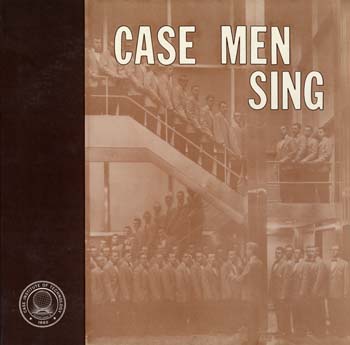 |
1960
The Case Institute of Technology Men's Glee Club released their first album, Case Men Sing. Featuring Case songs such as "Carmen Case," "Alma Mater," and the "Fight Song" the first edition sold out within a week. |
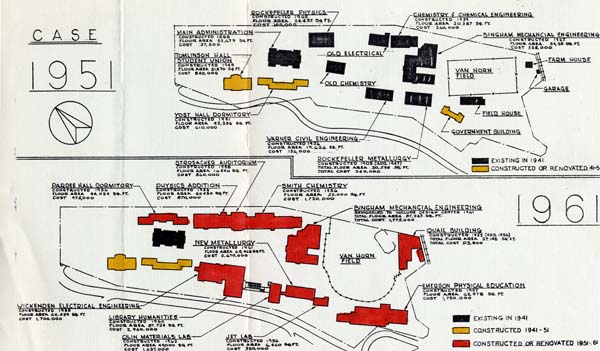 |
1961
As shown here, substantial changes to the Case campus were made during the 1950s. During the 1960s the trend accelerated. Case and Western Reserve held groundbreaking, cornerstone laying, and dedication ceremonies for over 20 buildings in the next 4 years. |
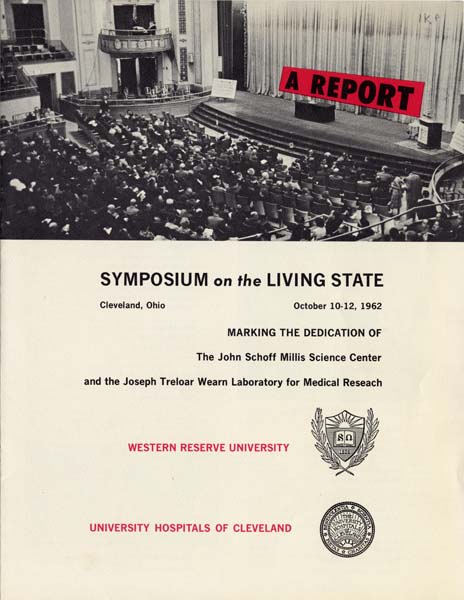 |
1962
In conjunction with the dedication of the John Schoff Millis Science Center and the Joseph Treloar Wearn Laboratory for Medical Research, a 3-day symposium, "The Living State," was held. |
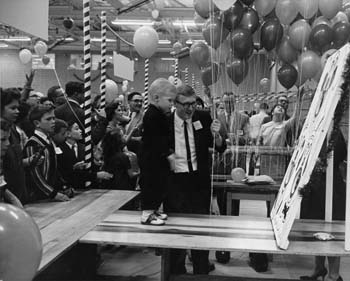 |
1963
Case Institute of Technology held its first annual Family Christmas Party for all faculty, staff, and their families in Emerson Gym. |
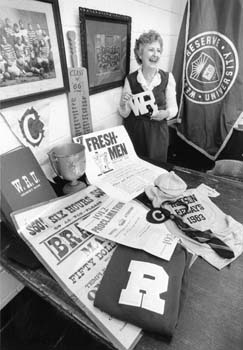 |
1964
Western Reserve University established a University Archives. Ruth W. Helmuth was named University Archivist and began a 21-year career at the University. |
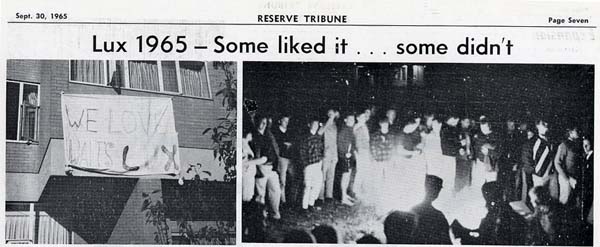 |
1965
A protest was held in September over the 1965 Lux (the Western Reserve University yearbook). About 25 copies were mutilated and burned. Some students were unhappy that the traditional yearbook format had been abandoned. The 1965 Lux featured an introductory essay and pictures – with no captions. |
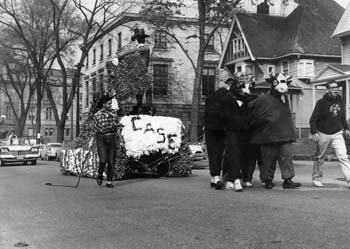 |
1966
Homecoming has been a proud tradition for many years. Pictured are floats from the Homecoming Parade at Case Institute of Technology. |
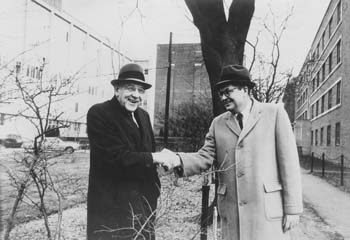 |
1967
Case Institute of Technology and Western Reserve University federated, creating Case Western Reserve University. Pictured are WRU President John Schoff Millis (L) and Case President Robert W. Morse (R) shaking hands over the fence that divided their two campuses. |
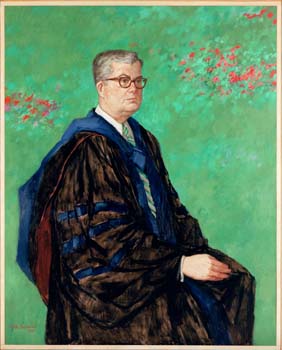 |
1968
Robert W. Morse was inaugurated as CWRU's first president. |
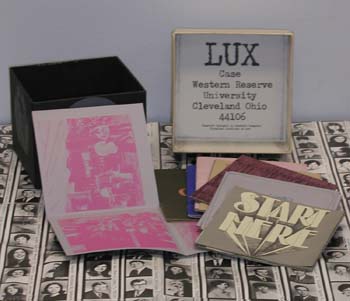 |
1969
The experimentation with yearbook formats continued with the publication of "the Cube," the 1968/69 yearbook. The captions and pictures were printed on several poster-sized pages and folded and packaged in a box. |
|